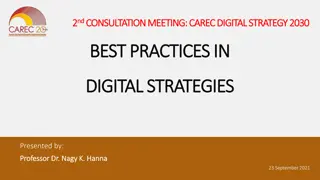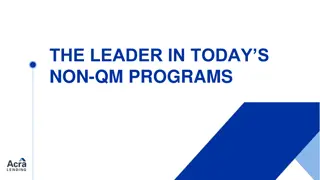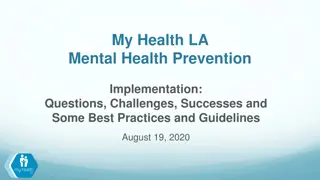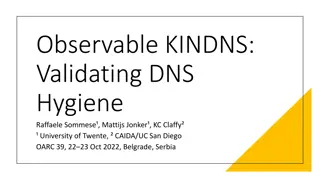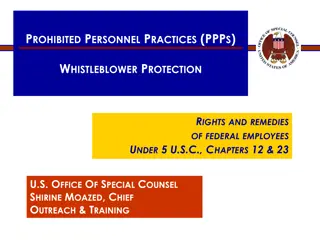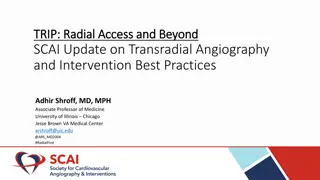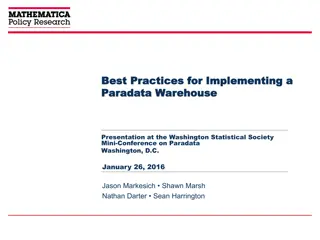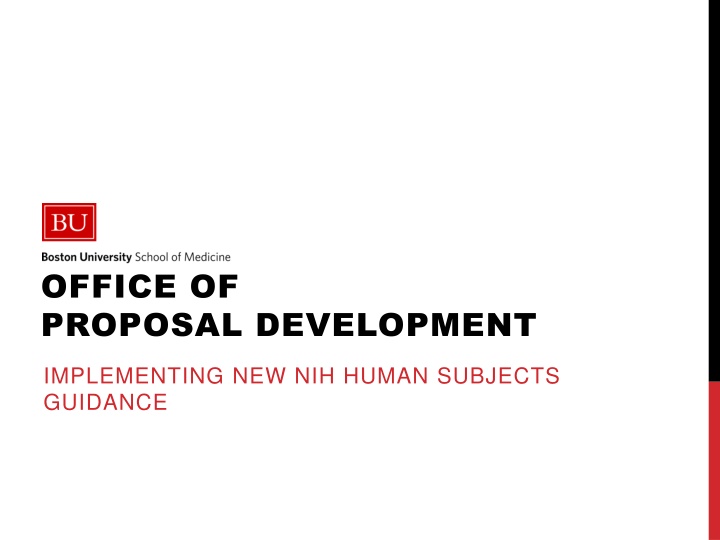
Implementing New NIH Human Subjects Guidance: Changes and Impact
Stay informed about the latest updates in human subjects research with the implementation of new NIH guidance, including changes to clinical trial definitions, single IRB use, and reporting requirements. Explore the broader scope of clinical trials and the importance of transparency in research practices.
Download Presentation

Please find below an Image/Link to download the presentation.
The content on the website is provided AS IS for your information and personal use only. It may not be sold, licensed, or shared on other websites without obtaining consent from the author. If you encounter any issues during the download, it is possible that the publisher has removed the file from their server.
You are allowed to download the files provided on this website for personal or commercial use, subject to the condition that they are used lawfully. All files are the property of their respective owners.
The content on the website is provided AS IS for your information and personal use only. It may not be sold, licensed, or shared on other websites without obtaining consent from the author.
E N D
Presentation Transcript
OFFICE OF PROPOSAL DEVELOPMENT IMPLEMENTING NEW NIH HUMAN SUBJECTS GUIDANCE
AGENDA Overview of New Human Subjects Rules Definition of a Clinical Trial Change in PHS Human Subjects Forms Single IRB for multi-site clinical trials OPD Actions to Address Changes Implementation of Future Changes
CHANGES TO HUMAN SUBJECTS Research Involving Clinical Trials Good Clinical Practice Training New FOAs specific to clinical trials New Review Criteria Expanded registration/reporting on ClinicalTrials.gov All Research Involving Human Participants New forms to collect human subjects information Single IRB for multi-site studies Certificates of confidentiality Clinical Trial FOAs Good Clinical Practice Registration & Reporting New Single IRB Application Forms Clinical Trial Review Criteria
CHANGES TO HUMAN SUBJECTS Broader definition of a clinical trial .why? Our purpose in defining clinical trials as we do is to improve dissemination and transparency. The bottom line: if public money is going to be spent to conduct experiments on people, you are expected to report the results. Video on Updates
CHANGES TO HUMAN SUBJECTS Does your study: 1. Involve human subjects? 2. Involve one or more interventions? 3. Prospectively assign human subject(s) to intervention(s)? 4. Have a health-related biomedical or behavioral outcome? If yes to all- your study is a clinical trial. NIH Tool to Help Determine if Study is Clinical Trial NIH Case Studies & FAQs
NIH CLINICAL TRIALS What is the sub-definition of "intervention"? An intervention is defined as a manipulation of the subject or subject s environment for the purpose of modifying one or more health-related biomedical or behavioral processes and/or endpoints. Examples include: drugs/small molecules/compounds; biologics; devices; procedures (e.g., surgical techniques); delivery systems (e.g., telemedicine, face-to-face interviews); strategies to change health-related behavior (e.g., diet, cognitive therapy, exercise, development of new habits); treatment strategies; prevention strategies; and, diagnostic strategies. If all of my participants receive the same intervention/treatment, are these participants "prospectively assigned"? Yes, it is not a requirement to have multiple treatment groups to be considered prospectively assigned. We do consider single-arm trials to be trials. Are measurements the same as interventions? No; measurements are used to collect data, while interventions are used to modify health- related endpoints. A manipulation or modification in one s behavior or environment for the purpose of measurement alone is not considered a clinical trial. What types of behavioral manipulations or tasks does NIH consider to be interventions? A manipulation or task is an intervention if it is used to modify a health-related biomedical or behavioral outcome. However, a manipulation or task used expressly for measurement, and not modification, would not be an intervention.
CHANGES TO PROPOSAL DEVELOPMENT PROCESS 1. New Forms-E application packages & FOAs 2. PHS Human Subjects and Clinical Trials Information Form: Use of study record(s) New data re: conditions, enrollment, etc. Major Changes: All Human Subjects Women, minorities and children combined to 1 attachment Recruitment and retention plan (new) Study timeline (new) Data Safety & Monitoring Plan (new for non-clinical trials) Overall structure of the study team (new) Major Changes: Clinical Trials Protocol synopsis and intervention narratives Statistical Design & Power Dissemination Plan
FINAL RULE & SINGLE IRB Studies that have not undergone initial IRB review will be subject to new Final Rule requirements Research ongoing on that date continue to be subject to current Common Rule Single IRB for cooperative research to go into effect January 20, 2020 Single IRB for Multi-Site Research: Domestic sites participating in multi-site studies involving non-exempt human subjects research funded by NIH are expected to use a sIRB sIRB costs can be direct or indirect charge to an NIH award as long as such costs are reasonable and consistent with cost principles Currently, IRB fees would not be charged as direct costs at BU Exceptions can be made where federal/tribal or state law/regulation prohibit sIRB sIRB not applicable for K, T, or F (guidelines on exceptions here) The following are examples of types of IRBs that could be used: An institutional IRB that is associated with either the awardee or a participating site; An independent, commercial or unaffiliated IRB; or A central IRB organized to review the proposed study. Instructions for writing a sIRB plan and providing the justification for exceptions to the sIRB policy within Section 3.2 of the Study Record in the grant application are provided in the PHS Human Subjects and Clinical Trials Information Form Application Guide.
COMMON PI QUESTIONS 1. Are multiple study records required? 2. Do I select exemption 4 or not human subjects research?? 3. Am I require to address Data Safety & Monitoring Plan for non- clinical trials? 4. Do you have examples of single IRB plan? Do I need to incorporate this into my budget? 5. How much of the research approach (recruitment, statistical analysis plan, etc.) should go into the PHS forms? Will it be viewed as overstuffing? Inclusion of statistical analysis in research strategy and PHS forms?
OPD ACTIONS Alerted investigators with upcoming grant regarding expected changes Developed internal training for OPD staff SRAI conference materials Cheat Sheet slides Examples of checklists for clinical v. non-clinical trial Feedback among team members (lessons learned) after first review cycle Shared resources and materials from partner organizations
MOVING FORWARD What did our peers do? Newsletters to faculty with notice of coming changes and dates for trainings Trainings hosted in Fall 2017 Semester Led by central office or medical school research development office How do we approach large federal changes moving forward? Early communication and training OSP Blog & Coffee with Colleagues Collaborative meetings, rather than presentation, with partner offices (ex. IRB approach from implementation for review; we approached with questions about implementation for proposal development) Other forums for internal training? Ways to reduce duplication of efforts?



